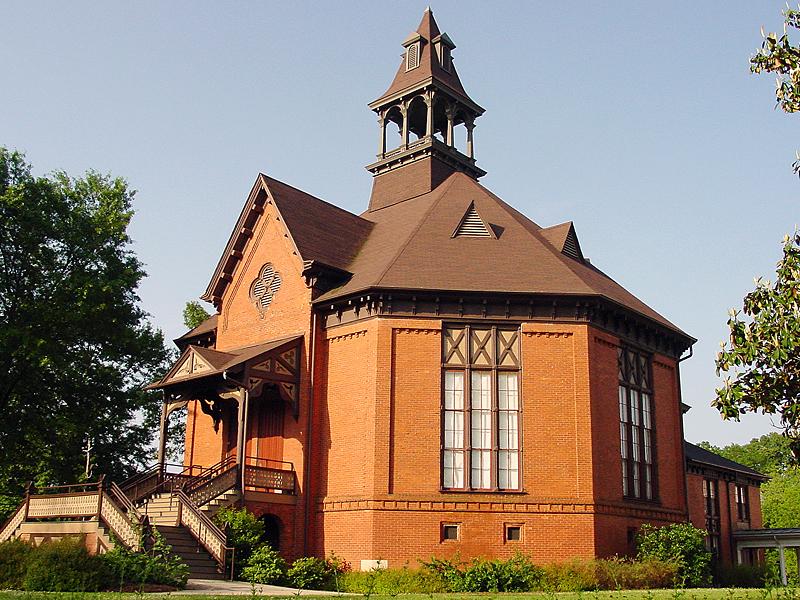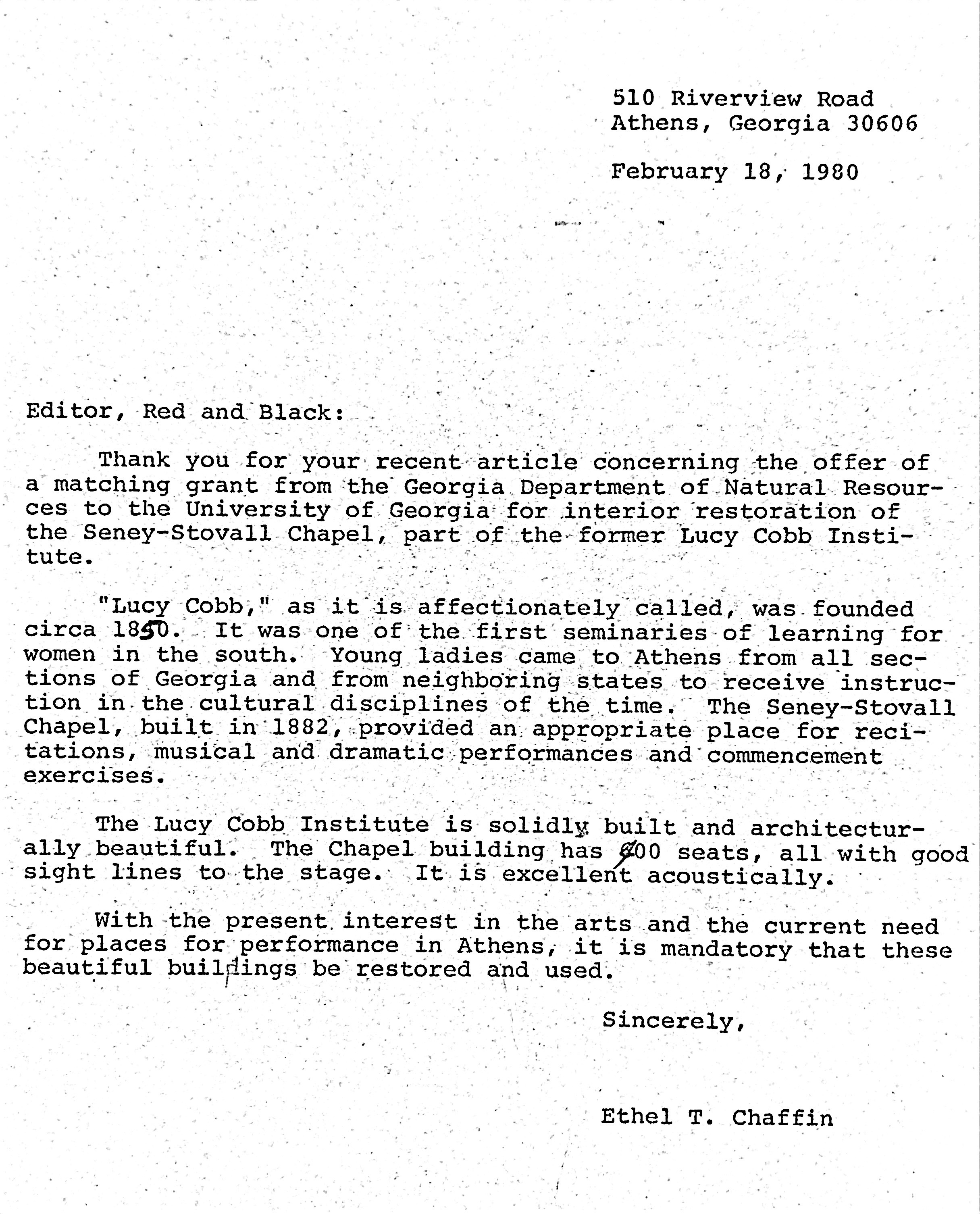“Solidly Built and Architecturally Beautiful:” The Preservation of Seney-Stovall Chapel
Written by our friends at Athens Heritage Room.
Chaffin was involved in the Foundation’s movements to save the Fire Hall from demolition for a new Civic Center, advocate for the passage of the Historical Preservation Ordinance, and convert the former Church-Waddel-Brumby House into the Athens Welcome Center. Of even more interest in this collection is Chaffin’s behind-the-scenes work with some of the earliest Heritage Foundation projects.
One of the benefits of working with archival collections is the opportunity to see how history, architecture, and people are connected. While working on our extant collections, I began to explore MSS 059 Ethel T. Chaffin papers. Ethel T. Chaffin (1921-2018) was a founding member of the Athens-Clarke Heritage Foundation, as well as a graduate student and instructor in dance and theater. Chaffin donated her papers to the Heritage Room in 2002 and continued to update the collection over the intervening years prior to her death. Her collection began as the notes for her Master of Arts thesis project “Professional Theatrical Entertainment in Athens, Georgia: 1865-1888” which she finished in 1982. But, as deep dives into the archives show us, everyone is multifaceted! As I sifted through her later donations, I was excited to see stacks of newspaper clippings and documents from the founding of the Athens-Clarke Heritage Foundation.
Founded in 1967, the Athens-Clarke Heritage Foundation (now known as Historic Athens) was formed to save the Church-Waddel-Brumby House, Athen’s oldest residence, from demolition to make room for a new federal building in an Urban Renewal Program. Chaffin was involved in the Foundation’s movements to save the Fire Hall from demolition for a new Civic Center, advocate for the passage of the Historical Preservation Ordinance, and convert the former Church-Waddel-Brumby House into the Athens Welcome Center. Of even more interest in this collection is Chaffin’s behind-the-scenes work with some of the earliest Heritage Foundation projects.
One of the Heritage Foundation’s most talked about projects was the preservation of buildings on the former Lucy Cobb Institute site – most prominently, the Seney-Stovall Chapel.

The Seney-Stovall Chapel was a project that was on the radar of members of the Athens community prior to 1980. The New Georgia Encyclopedia entry on Lucy Cobb notes this about the preservation of the Chapel:
In the 1970s a group of Athens preservationists, many of them children or grandchildren of alumnae, received a federal grant to renovate the exterior of the institute’s Seney-Stovall Chapel. This renovation effort was led by historian Phinizy Spalding, the grandson of alumna Nellie Stovall, who was instrumental in the original construction of the chapel.
Sarah Case, “Lucy Cobb Institute”
From my reading of Ms. Chaffin’s correspondence, however, it became clear that the preservation of Seney-Stovall was not just led by Spalding, but also by the behind the scenes work of Ms. Chaffin and through a community effort.
Chaffin clearly received community support for her work: T.M. Tillman states in 1981 that he “has been working on the University to take care of, and improve the Lucy Cobb property for twenty (20) years, and I hope you have better luck than I have had in the past” (Figure 1) and Spalding reveals that he “marvel[s] at your [Chaffin’s] ability to come up with so many good ideas in relation to this one project” (Figure 2).

Furthermore, Chaffin’s correspondence demonstrates that she worked tirelessly as the face of the project by writing letters to local newspapers about the project, organizing events, and other community building efforts. Included in the collection are handwritten and carbon copies of letters written to local newspapers (The Red and Black and Athens Observer) in 1980 expressing her support for the preservation of the Chapel.

This correspondence sets the scene for the preservation of the Chapel circa 1980-81: fairly bleak. It is partially Ms. Chaffin’s renewed passion for and interest in the project that resulted in the completion of preservation work in 1997. By putting her energy and passion into researching the history of the building, the importance of the architecture, and the potential uses it had for the university and community, Ms. Chaffin helped ensure that this building would remain standing for generations to come.
Now the chapel stands as a unique testament to what happens when preservation and reuse are combined. Rather than simply leaving the building preserved as an almost mausoleum to the past, the Chapel is instead restored for use by a variety of university groups, community groups, and individuals, from a UGA undergraduate production of Company to hosting author Jeff Vandermeer to serving as a recording site for R.E.M, the Chapel allows for the interaction of past and present.
Have more questions? Email us at heritageroomref@athenslibrary.org.
Works Consulted:
Case, Sarah H. “Lucy Cobb Institute.” New Georgia Encyclopedia. 21 August 2013. Web. 24 June 2020.

